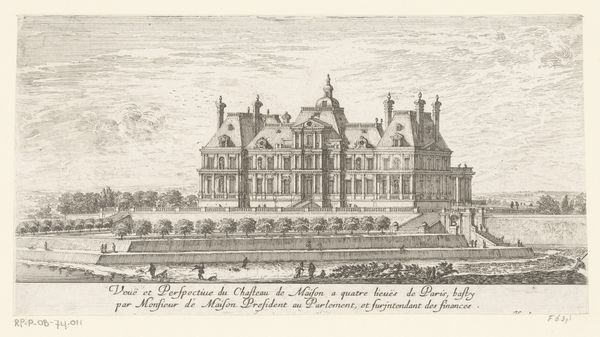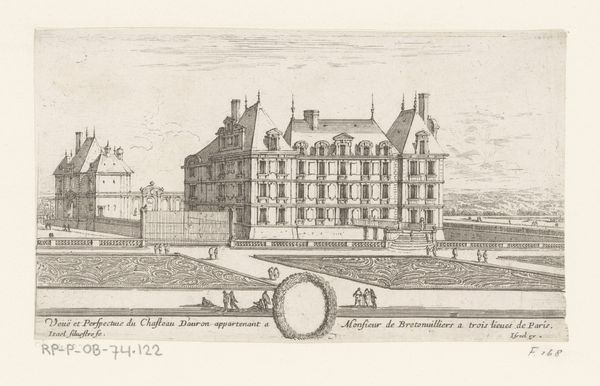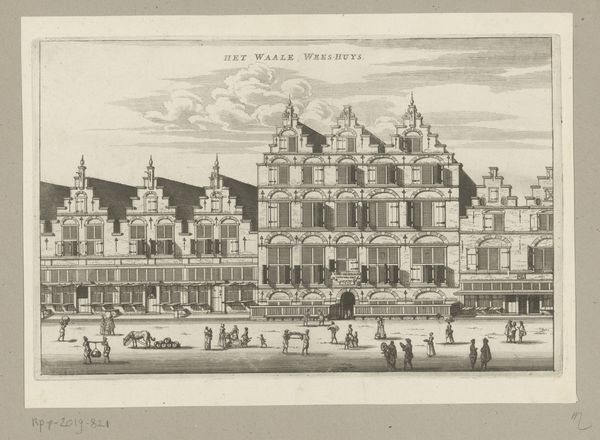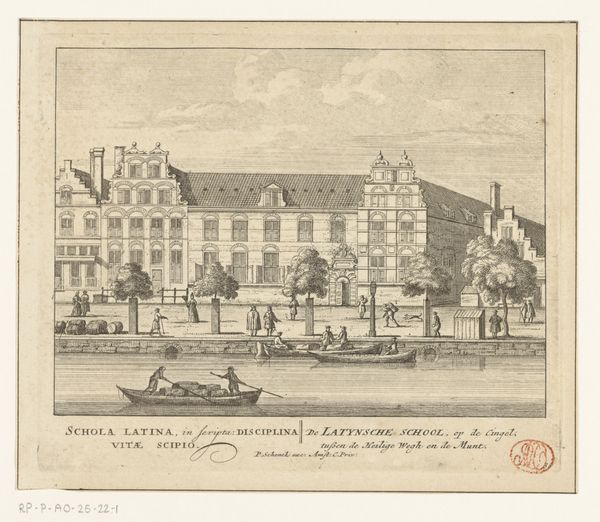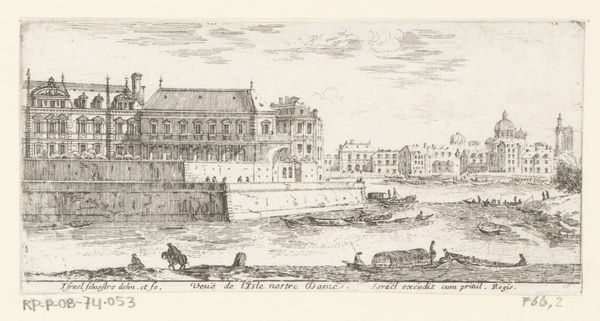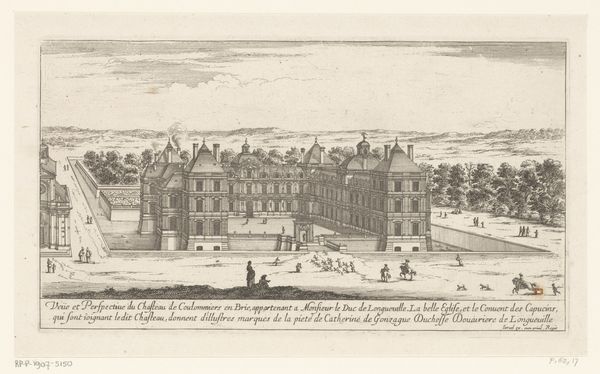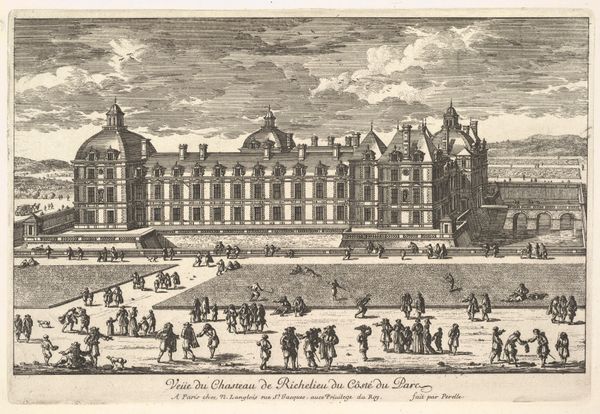
Gezicht op de Handboogdoelen, het Stadsmagazijn (Bushuis) en de Voetboogdoelen te Amsterdam 1663 - 1664
print, etching, architecture
baroque
dutch-golden-age
etching
landscape
cityscape
architecture
Dimensions: height 198 mm, width 302 mm
Copyright: Rijks Museum: Open Domain
Curator: Immediately striking is the light here. It’s rendered with such precision using the etching technique. Editor: It evokes a strong sense of place, wouldn’t you agree? You can almost hear the bustle of 17th-century Amsterdam. We're looking at Jacob van Meurs' "View of the Handboogdoelen, the City Warehouse (Bushuis) and the Voetboogdoelen in Amsterdam," created between 1663 and 1664. It's currently held at the Rijksmuseum. Curator: Yes, certainly! Beyond just documenting these buildings – the Handboogdoelen, Stadsmagazijn, and Voetboogdoelen – it showcases the power structures present in the city’s fabric. The Doelen buildings, for instance, weren't just for archery practice. They were spaces where civic guard met, wielding real power within the city. Editor: The architectural details alone tell such stories. Consider the facades, each vying for attention with different rooflines and ornamentation. These are visual signifiers of the different institutions housed within, reflecting both civic pride and the distinct identities of those who occupied these spaces. Curator: Precisely. And notice how the water, almost a mirror, doubles the image of these impressive buildings. Waterways, you know, served as crucial transportation routes and sources of commerce. The inclusion highlights the centrality of Amsterdam’s position in Dutch trade at the time. Editor: Those little figures populating the scene, the burghers going about their daily routines. What symbolic weight do you attribute to them in the scene? The boats on the canals are quite detailed as well. Curator: Their very presence anchors these buildings in a living, breathing city. And look there’s even a carriage – an emerging symbol of status in the city during this period! Meurs does well to highlight all the markers of prosperity within this vista. Editor: Fascinating how this cityscape presents both the hard edges of urban growth and these softer symbols of a life unfolding at that very moment in time. The details do truly invite us to pause and imagine ourselves within this specific point in the history of Amsterdam. Curator: Exactly. The work is a remarkable testament to Amsterdam’s Golden Age, captured at its peak, both architecturally and socio-politically. Editor: It reminds us that every brick and every boat carries a cultural code, even centuries later.
Comments
No comments
Be the first to comment and join the conversation on the ultimate creative platform.
